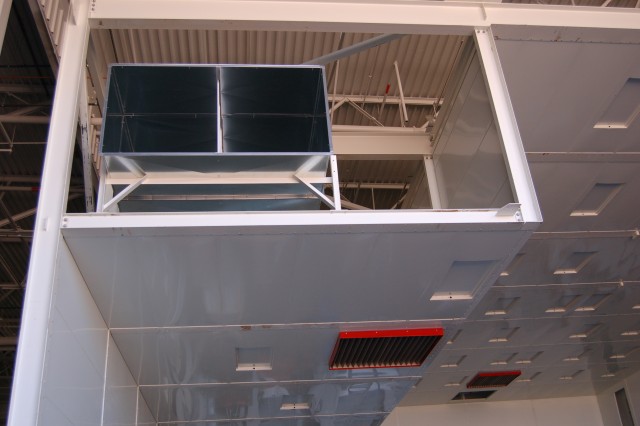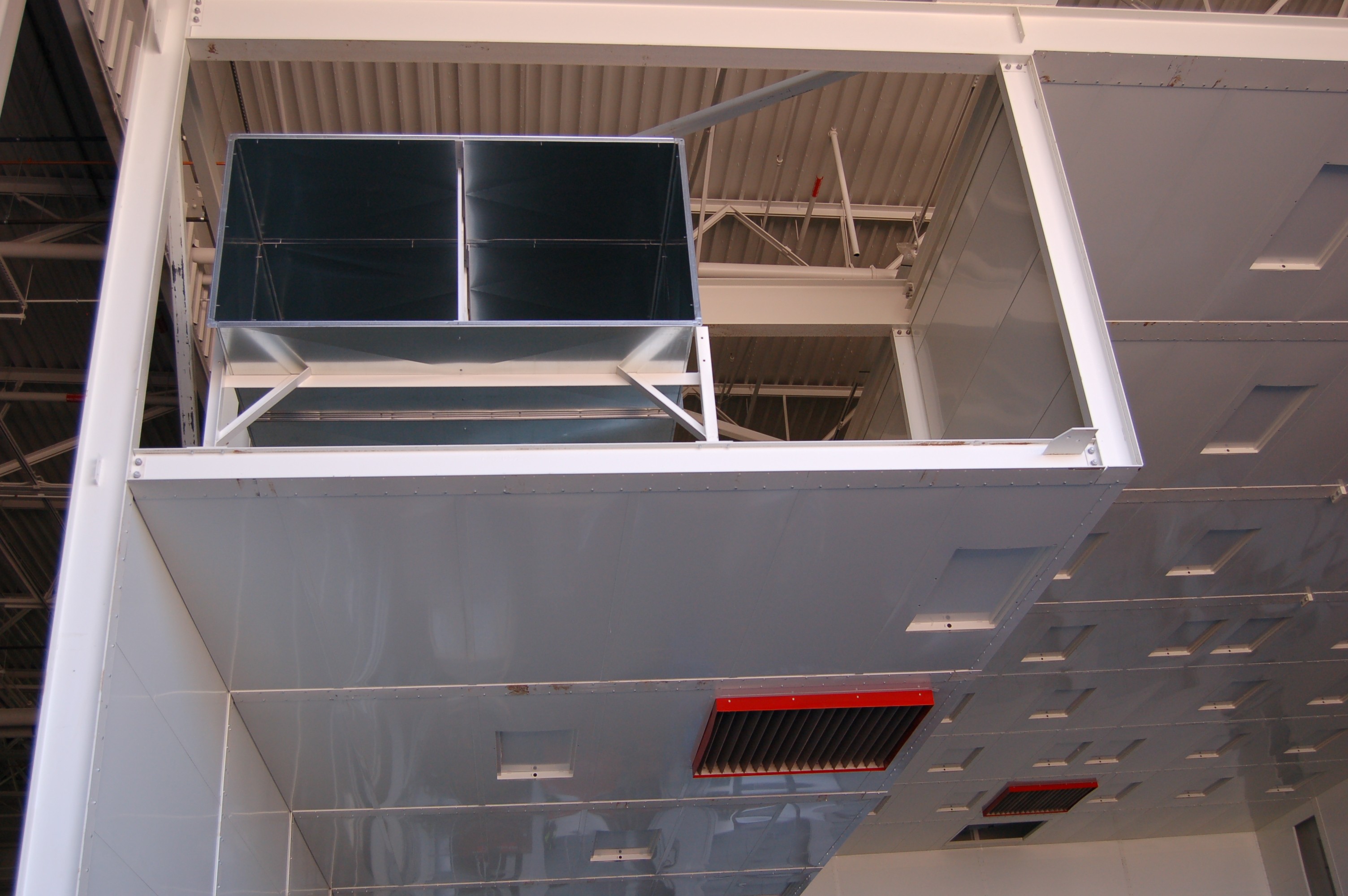A building of 69,000 square feet may seem large for a painting facility, but this one is a very special painting facility.
The building is at Hill Air Force Base, Utah, and it's the home of F-22 "Raptor" fighters. One distinction that these fighters have is that they are largely invisible to conventional radar. This constitutes a huge advantage in most combat scenarios. What helps to make them invisible is the paint that they wear. When an F-22 comes into the shop for maintenance, panels are removed - and when that happens, paint flakes off and the aircraft loses its invisibility. So repainting F-22's to exact specifications is vitally important.
To meet the Air Force's need, the Sacramento District of the Army Corps of Engineers is building a $24.6 million facility loaded with high-tech features that make it one of a kind in the Air Force's inventory, and enables 309th Aircraft Maintenance Group technicians to simply roll a fighter into a bay and paint it.
In order for the paint (known as "Low Observable Coating") to do its job effectively, it has to be applied under extremely precise conditions: temperature, humidity and air circulation have to be exactly right. In order to accomplish this, each paint booth will be enclosed, with its own heating and air-conditioning system. Each of the three booths has a dedicated furnace on a platform above the booth, to minimize the possibility of sparks from the furnace coming in contact with highly flammable paint. A crane will move between booths to distribute parts and other necessities.
In case of fire, there is a robust fire-suppression system, with thousands of gallons of water stored under the building expressly for that purpose. Each booth also has a foam generator that spits out 3 feet of foam per minute and can completely engulf an aircraft in a few minutes.
The facility also will have a radar tower and dedicated radar system. It includes an attached fire station with bedrooms, fitness room, laundry, kitchen, dining room and day room.
"This facility is critical to the Aircraft Maintenance Group's mission," said Terry Hess, facility engineer for Hill AFB. "A functional facility helps decrease costs, improve quality and meet or exceed schedule. A well-planned, designed and constructed facility will make aircraft maintenance more efficient."
In addition to painting, there are also two booths in the facility where other forms of maintenance can be performed. The project is expected to be completed in the summer of 2010.


Social Sharing